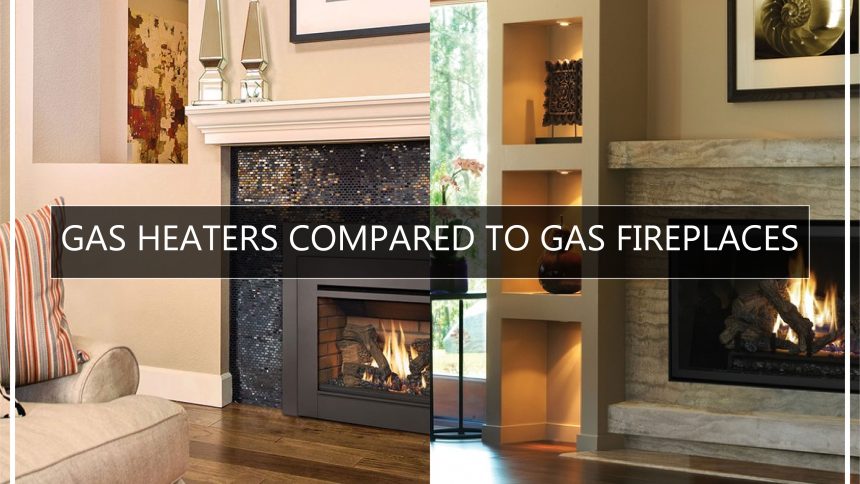Centuries ago, heating options were pretty basic. Our ancestors lit fires in the open, or huddled around stone hearths in holes and caves. These flames probably died out pretty quickly, or else they needed to be constantly fed with twigs and fuel. The fires helped them cook, and warned off predators. But the second the fire went off, lurking animals could attack, so someone probably had to tend the fire all night. Maybe they took turns.
Today, we still want an all-night fire sometimes, though it’s more a matter of comfort than survival. And while we still use wood fires, it’s not our only option. Wood fires are raw and cosy, but they’re also cumbersome and messy. You have to buy bags of firewood, or chop and season your own fuel, which can take a year or more. Contemporary wood heaters in Sydney are easier to light, but they still give off smoke and ashes.
For this and other reasons, gas burners are more popular. They’re considered cheaper to run than wood burning heaters, because you can turn them on with a single switch. (Some modern wood heaters can do that too, thanks to GreenStart technology). They can burn through the night and need no clean-up. A technician can visit once or twice a year for maintenance, but that’s it. Also, gas is easily available year round.
Portability
There are three main styles of gas burners – inserts, in-builts, and freestanding units. The terms gas heater and gas fireplace are sometimes used interchange-ably, but it isn’t always the case. Mostly, when people refer to a gas heater, they’re talking about a mobile unit that you can move from room to room. Inserts and in-builts are permanent furnaces. An in-built is generally a ‘linear’ fireplace that is ensconced in the wall. It fits snugly, and is frequently set flush against the wall. This makes it ideal for small rooms, because it doesn’t occupy additional space or crowd the already limited area.
Inserts are similar, except that they’re built into a hearth that already exists. So if your home was designed with a chimney and brick mantel, you can install a gas insert there. The space is probably cavernous, because it’s designed for roaring log fires. Any gas fireplace would be lost in that space, so inserts are accessorised with cowls to ‘tighten’ the chimney, reducing heat loss – and fascia to seal space between the fireplace and the brick boundaries. Of course you can place a gas heater in a hearth too … the difference is you can remove it when it’s idle.
Installation
Because heaters are portable, they don’t need installation, unlike inbuilt fireplaces or inserts. You can move them from room to room, carry them outdoors, or even take them camping. Some gas heaters have cooktops, so they double as a kitchen appliance. They might be designed to function as gas stoves, so they could have an oven, a boiler, or a warmer. Fireplaces don’t usually have this functionality, but they have more hi-tech features. Gas heaters are smaller and more limited in their utility.
For example, a gas fireplace often has its flames and lights set up as independent features. So if light bothers you or prevents you from sleeping, you can dim the bulbs but keep the fire burning. And if it’s too warm for fire but you still want the comfort and ambience of a furnace, you can turn on your LED lights and display artificial flames even when there’s no actual heat being emitted. Both heaters and fireplaces can be electronically ignited, and both can be operated by remote.
Radiation
Traditional gas fireplaces were powered by gas, but they also used up air to sustain their flames. They would draw air from the area immediately surrounding the fire, and released spent gas fumes into the same space. So if the room wasn’t well ventilated, there was a risk of gas poisoning and/or suffocation. In modern gas fireplaces and heaters, this problem is resolved with a glass panel and a flue system. The glass keeps sparks in and prevents the fire from consuming the air inside the room. It also widens the heating area, thanks to radiation.
Gas heaters, because they are portable, might have glass on three sides. Because heat is radiating in three directions rather than one, the warmth spreads further. But a heater still wouldn’t emit as much heat as a fireplace because heaters are designed to be small and portable. They might also have directional vents so you can push heat where you want, such as your feet, or your upper body. Fireplaces don’t generally have that feature, though they do have fans to suck in air and push heat out. They distribute heat to other parts of the home.
Read Also:
